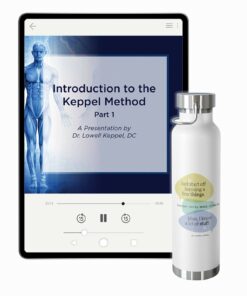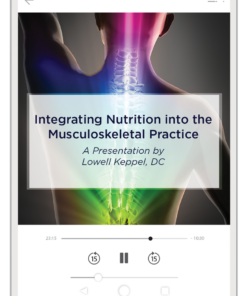Enjoy the latest installment of Dr. Lowell Keppel’s Tip of the Month series by Dr. Royal Lee for practitioners.
During the late 1950s and into the 1970s, Standard Process published the Applied Trophology newsletter. To this day, it is still an important resource full of exceptional information for the practitioner. One of my favorite recurring features in the newsletter is the “Tip of the Month” from Dr. Royal Lee.
Let’s look at what Dr. Lee shared with us from the second half of 1958.
Tip of the Month (Sunstroke, Poison Ivy, Poison Oak)—July 1958
“Calcium lactate and vitamin F complex have been found to be invaluable in cases of sunstroke, poison ivy, and poison oak.”
Dr. Lee took every opportunity he could to teach the importance of calcium in the tissues. Calcium lactate easily ionizes in the body (Ca++) and helps the local environment of the cells. This ionized calcium reduces the histamine response due to destruction of cells from poison ivy or oak. Also, we know that sunstroke is from the excess production of vitamin D, thus locking calcium in the blood. The combination of Calcium Lactate and Cataplex F restores calcium to the tissue to promote healing. I refer you to the Therapeutic Food Manual, under “Hives and Poison Ivy,” to see Dr. Lee’s recommendations as well as the rationale behind them.
Click here for the complete July 1958 issue of Applied Trophology.
Tip of the Month (Head Noises)—August 1958
“Head noises such as ringing, buzzing, hissing or other sensation of noise in one or both ears is often due to a deficiency of minerals, specifically iodine and potassium. In the majority of these cases Allorganic Trace Minerals [Trace Minerals-B12] relieved this condition.”
Mark Anderson in recent webinars indicated how head/ear noises can be a result of anemia, for which he recommends Ferrofood.
Here Dr. Lee recommends Trace Minerals-B12, which can also be indicated in anemias. He further singles out iodine and potassium as minerals to help head noises—the iodine for its favorable effect on the thyroid and the potassium for its effect on vagus nerve transmission. The vagus (either one of the tenth pair of cranial nerves), will become paralyzed without sufficient potassium.
Click here for the complete August 1958 issue of Applied Trophology.
Tip of the Month (Digestion)—September 1958
“One of the specific uses of Betaine Hydrochloride (Standard Process) is to aid digestion. More efficient results are obtained when the tablets are taken during the meal.”
Betaine Hydrochloride (1947) was Dr. Lee’s first product to aid digestion in the stomach for people who did not produce enough hydrochloric acid. This product also has some pepsin in it. In 1958, Dr. Lee gave us Zypan (enZYmes of the PANcreas), which is Betaine Hydrochloride super charged with pancreas cytosol extract and spleen support, and this has since become the product of choice for stomach issues. (Unfortunately, I do not know if Zypan was released at the time that Dr. Lee wrote the above Tip of the Month.)
Click here for the complete September 1958 issue of Applied Trophology.
Tip of the Month (to Dentists)—October 1958
“Patients who dry cough, choke, or gag when the mouth or throat is examined or when X-rays are taken or impressions made will usually normalize if Cataplex A and F along with Betaris Tablets [Betafood] are taken for three or four days prior to their next appointment. Clinically, this condition is indicative of biliary stasis or a gallbladder condition.”
Another seemingly insignificant symptom that serves as a warning of more serious conditions manifesting in the future! Gagging, choking, and even dry coughing all being a sign of gallbladder stagnation. In his Tip of the Month from June 1958, Dr. Lee discussed how dry cough at night was associated with calcium issues. Now he offers his insight into coughing while having your mouth open and examined. When a patient complains of gagging easily or a choking feeling, have them chew up three A-F Betafood tablets and see how they respond in five minutes. (I just did it for myself as I write this, and ten minutes later the cough I had all morning has diminished!)
The mechanism here is detoxifying the liver and thinning the bile. John Courtney, Dr. Lee’s trusted protégé and head of research and development, said that the vitamin A and F in the A-F Betafood helps line up fat molecules so they can easily flow out of the gallbladder for elimination.
Click here for the complete October 1958 issue of Applied Trophology.
Tip of the Month (Systemic Alkalosis)—November 1958
“In systemic alkalosis calcium is lost by precipitation in body fluids. As a result, bursitis and neuritic pains are common. The addition of Calcium Lactate to the alkalosis schedule will alleviate these conditions.”
Maintaining proper pH is a foundational issue. Dr. Lee, Dr. Melvin Page, and others knew that balancing the pH of the body is essential, especially with calcium metabolism. Being too alkaline, as Dr. Lee states here, can cause calcium to precipitate out of body fluids and into areas it should not go. Again Dr. Lee points to Calcium Lactate, the good ole foundational mineral. There is more calcium in the body than all the other minerals combined. His second product, produced in 1931, was Phosfood Liquid. When taken on an empty stomach, it makes the fluid of the body more acidic, thus keeping calcium in solution and not precipitate onto the teeth, in the bursas, in the nerve, and in other areas. Cal-Amo is another systemic acidifier. Making sure the patient is acidified is also of importance.
Click here for the complete November 1958 issue of Applied Trophology.
So many of our patients have the same issues that Dr. Lee discusses in his Tip of the Month feature. Storing away these gems of information and knowing where you can find them will help you and your patients. Even if we may not understand the complete physiology of these tips, many of them are homeruns. Give them a try and be amazed at the genius of Dr. Royal Lee.
Curious for more? Visit the Applied Trophology Archives to see Dr. Lee’s final Tip of the Month for 1958 and beyond.
Images from iStock/urfinguss (main), Tero Vesalainen (woman holding her mouth), Antonio_Diaz (man holding his ear).





